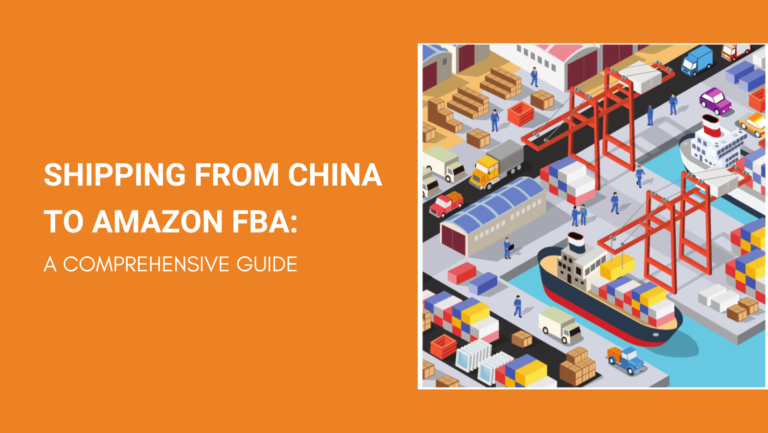Sourcing goods for your Amazon store from China offers lots of advantages. The cost of goods, for example, is quite low in China and allows you to sell at great profits. The robust manufacturing sector also offers product variety and access to private labeling.
However, sourcing goods from China also means that you will need to figure out how to ship your goods to Amazon FBA.
It sounds rather obvious at first but this entails more than just transport. Other logistics like FBA inventory requirements also come into play.
Feeling overwhelmed? Don’t worry, This guide has all the tips you need to handle shipping from China to Amazon FBA easily.
Let’s begin.
The 3 Ways to Ship from China to Amazon FBA

Amazon requires FBA sellers to present their inventory packed and labeled in a very specific way. Subsequently, you need to figure out who will prep the goods early on, and then plan your shipping accordingly.
For better context, come along and let us examine the 3 key shipping options.
Shipping Directly from China to FBA
In this approach, your product supplier in China labels and packs the goods according to FBA rules. They then inform you once the goods are ready and ship them directly to the stipulated Amazon FBA warehouse.
Pros:
- Direct shipping is cheaper as there are no extra stops and handling fees.
- Most suppliers offer more affordable prepping fees than Amazon or if you were to do it yourself.
- Direct shipping minimizes the risk of losing goods or items getting damaged because it involves fewer steps.
Cons:
- It is tough to ascertain if your supplier adhered to all FBA rules.
- You could incur extra FBA costs if your supplier makes any errors or ships low-quality goods.
Shipping to Yourself, Then to Amazon
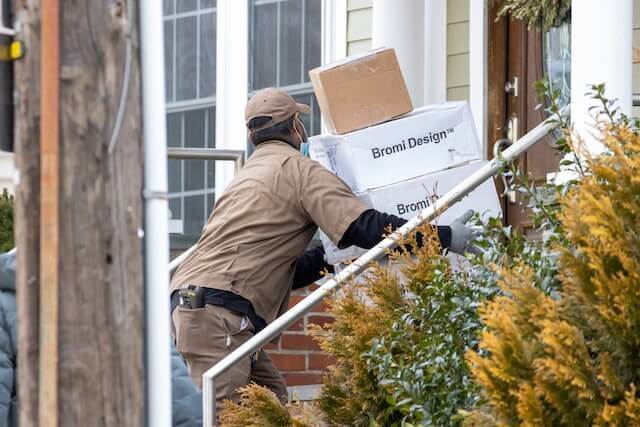
In some cases you may find that:
- Your supplier in China does not offer Amazon FBA prep services.
- The supplier charges way more than your budget for Amazon FBA inventory prep.
- You do not feel confident entrusting the responsibility of Amazon FBA inventory prep to your supplier.
Subsequently, it may be more effective to first have the goods shipped to you so that you can handle the prepping process and then ship them to FBA warehouse(s).
Pros:
- You can avoid inventory problems because you get to inspect and then prep the goods accordingly before shipping to Amazon FBA.
- You may save on prepping costs by doing it yourself.
- It may be easier to achieve JIT delivery to Amazon using this approach.
Cons:
- The shipping cost may be higher because it is not direct.
- Using this approach for bulk orders can be tough because you would require adequate working space to help to prep.
- This option is only viable if you fully understand how to execute FBA inventory requirements.
Shipping to 3PL Then to FBA
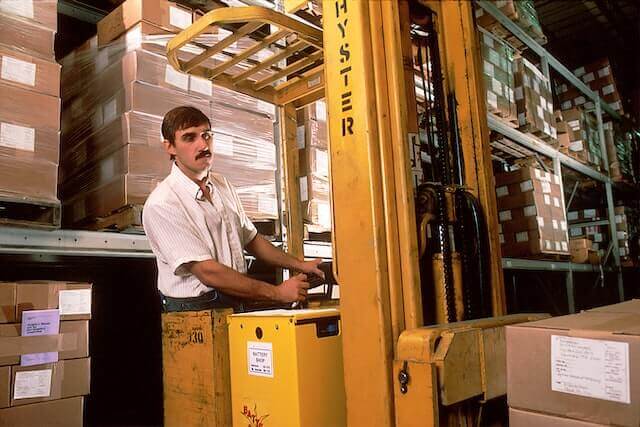
Third-party (3PL) logistics companies own warehouses in and outside China. They have the resources to provide a variety of services such as:
- Storage
- Dropshipping
- Branding
- Inventory prep (based on client instructions)
Therefore, when you hire a 3PL company, they can:
- Collect or receive your goods from the supplier
- Prepare the goods to fulfill Amazon FBA requirements
- Ship the goods to FBA warehouses right on time
Note: We offer an effortless 3PL solution that checks all these boxes by providing a cost-effective Amazon FBA shipping service.
Pros:
- Working with a 3PL allows you to delegate the prepping task.
- 3PLs with warehouses in and outside China offer a very smooth and timely inventory flow.
- 3PLs usually offer more reliable inventory prepping services as they have dedicated staff for the tasks and enough room.
Cons:
- You would have to incur the extra cost of hiring a 3PL firm.
Direct Shipping vs. Hiring a 3PL (Third-Party Logistics)
Your priority should be delivering top-tier products that are well-prepared in line with Amazon FBA rules.
With this in mind, here are some insights to help you identify when to ship directly and when to hire a 3PL to bridge the gap for you.

Shipping Directly to Amazon FBA
Shipping directly from China to Amazon is convenient and often budget-friendly. However, it also means you never get a chance to inspect the goods your supplier sends to Amazon on your behalf.
Subsequently, it is advisable to only use this approach if:
- Familiarity with FBA Standards: You are certain that your supplier understands FBA regulations and can accurately fulfill all requirements.
- Reliable Quality Control: The supplier has high-quality inspection standards, and you can trust them to deliver flawless products.
- Fair Costs: The costs of the supplier prepping your goods and direct shipping are fair and do not wipe out your profit margin.
- Suitable Shipping Terms: You and the supplier can agree on a suitable shipping carrier that offers the right shipping terms.
Tip: Amazon FBA only receives your inventory. You are responsible for all shipping costs. It is thus best to opt for shipping terms like DDP, where costs and taxes are handled beforehand.
Hiring a 3PL

Unlike a factory, a third-party company is more equipped to handle post-production processes like preparing inventory for FBA. As we mentioned above, they have:
- More staff dedicated to such tasks
- Better warehouse management technology
- Enough space to process, pack, and safely store your inventory
Nevertheless, it costs a little extra to hire a 3PL firm. So, it is understandable that you may be conflicted about hiring one. When making that choice, consider hiring a 3PL if:
- Supplier Limitations: Your supplier does not provide Amazon FBA inventory prepping services.
- Bulk Shipments: You are sourcing goods in bulk; a 3PL firm may be better equipped to prepare such inventory quicker and even store some for JIT delivery if you request it.
- New Suppliers: You are sourcing goods from a new supplier or one with unreliable quality inspection standards.
- Improved Logistics: The 3PL can provide more seamless and cost-effective shipping arrangements.
- Cost-effectiveness: The cost of hiring the 3PL is fair and the service is worthwhile.
Weighing Your Options
Choosing between direct shipping and hiring a 3PL ultimately depends on your specific needs and circumstances. Here’s a quick comparison:
| Criteria | Direct Shipping | Hiring a 3PL |
| Quality Control | No opportunity for inspection | Ability to inspect before shipping |
| Cost Efficiency | Generally cheaper | Higher costs due to additional services |
| Compliance Assurance | Risk of non-compliance with FBA rules | Ensures compliance with packaging standards |
| Speed | Faster delivery time | May add extra time due to handling |
| Flexibility | Less flexibility in handling changes | More adaptable to changes in demand |
Simply put, your priority should always be delivering high-quality, compliant products to Amazon FBA efficiently and cost-effectively.
If you have a trusted supplier and are shipping smaller volumes, direct shipping may suffice.
However, for bulk orders, complex logistics, or uncertain suppliers, hiring a 3PL can be invaluable.
Factors to Cross-Check Before Shipping

Shipping to Amazon FBA requires meticulous preparation to avoid costly mistakes or rejections.
Regardless of the shipping method you choose, here’s a checklist of essential factors to verify for a seamless process.
Quality Inspection
Quality inspection entails evaluating the items in your order to ensure that they do not have any defects. It can be performed by either of the following parties:
- The supplier – your supplier can perform a quality inspection and send you a report. This can also include pictures or a video walk-through to ascertain that they have performed a satisfactory inspection.
- An independent inspector – you can hire an independent quality inspector or a professional sourcing agent in China to go and inspect your goods at the supplier’s warehouse. They would then send you a report highlighting any issues they find.
- Your 3PL partner – 3PL firms usually inspect goods once they receive them from your supplier. They can return any defective goods on your behalf and obtain replacements. This is way more convenient than shipping returns later across countries.
- The buyer – you (the buyer) can ship the goods to your premises, inspect them, and bring up any product defects you spotted with the supplier. This is effective but the return process can be lengthy and costly.
Tip: Independent inspections are particularly recommended when working with new suppliers.
Packing
Amazon FBA definitively outlines rules about how sellers should pack their inventory. This includes specifications such as:
- How to differentiate and pack individual vs case-packed products.
- How to prepare certain products by wrapping to avoid breakage or placing them in transparent bags for easy intake.
- The size and weight limits for outer packing boxes.
Tip: Always ensure that you understand these rules and how they apply to your shipment. If the supplier or 3PL is responsible for packing, request a demonstration or photos of the packing process to confirm compliance.
Labeling
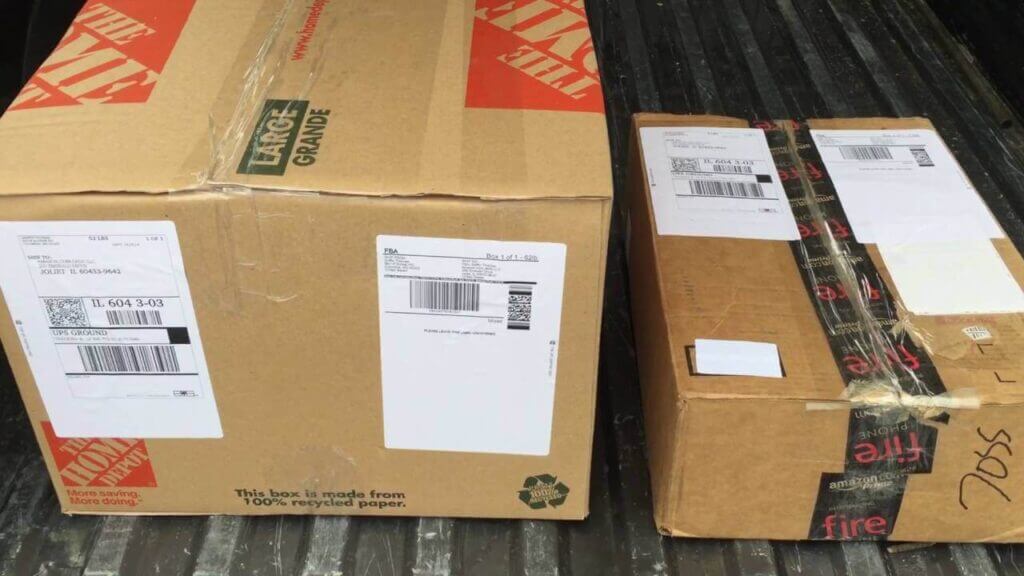
Amazon has unique inventory identifiers like ASIN and FNSKU. In some instances, you may also be allowed to use the manufacturer’s barcode.
So, start by finding out what type of identifiers your products require. You can then log into your Amazon seller dashboard and generate the requisite identifiers through the FBA ‘Send Inventory’ provisions. Share them with your supplier or 3PL if necessary.
Additionally, always ensure that:
- The labels are placed on flat surfaces and not across corners or box openings that may need to be cut open.
- All labels are clearly printed for easy scanning.
- All labels are placed on the outside of packages and are not obstructed by other materials.
Tip: Double-check label accuracy and placement to avoid delays or rejections at the Amazon warehouse.
Shipping Details
It is important to request comprehensive shipping details whether you are shipping directly to Amazon, through a 3PL, or to yourself. Such shipping details should include:
- The name of the shipping carrier
- The date of shipping
- The estimated date of arrival
- Shipping documents, e.g. the bill of lading, export clearances, etc.
- Tracking details
Tip: When shipping directly or through a 3PL, ensure that the shipping terms include last-mile delivery, import clearances, and all-inclusive costs. This assures you that the goods will be delivered right to the FBA warehouse(s).
Seasonal Demand and Lead Times
When shipping from China to Amazon FBA, it’s important to consider seasonal demand and lead times.
During peak seasons like Chinese New Year, holidays, or Amazon Prime Day, shipping can take longer, and there may be delays at ports, customs, or Amazon warehouses.
To handle this, you should:
- Plan ahead and allow extra time for shipping during busy seasons.
- Be aware of upcoming holidays in China (like Chinese New Year) or in your target market, as these can affect production and shipping.
- Keep track of possible delays in shipping or when your products arrive at Amazon’s warehouse.
Tip: Add an extra 1-2 weeks to your normal shipping time and talk to your supplier or 3PL about any seasonal factors that might cause delays.
Shipping Methods to Amazon FBA
We now understand the different methods you can use to ship from China to Amazon FBA. However, while addressing those methods, we only focused on who handles and preps the goods.
So, let’s now shift gears and focus on another vital shipping aspect; transport. Here are the main options to consider.
Express Shipping
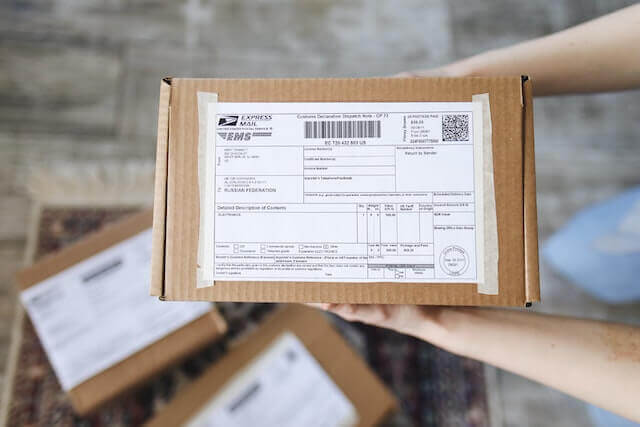
Express shipping is a door-to-door shipping solution. It is provided by international couriers like DHL, UPS, and FedEx, among others. It works as follows:
- Your supplier or the courier delivers the goods to the shipping terminal.
- They clear the goods for export.
- The goods are shipped by air to your country.
- The courier’s agents clear the goods at the port of destination.
- The courier delivers the goods to the indicated Amazon FBA warehouse.
This process takes approximately 2 to 4 days and is the fastest out of all the shipping options. It also has no minimum weight restrictions. So, before selecting this option, consider:
- Air freight regulations prohibit the transportation of risky goods like batteries or any liquids with flammable components.
- Express shipping is convenient because it is fast and covers door-to-door transport. However, it costs a premium.
In addition, consider your destination when choosing a courier. UPS, for example, has a more effective delivery network in the USA while DHL is a giant in Europe. Making the right choice could help you save time and money.
Sea Freight
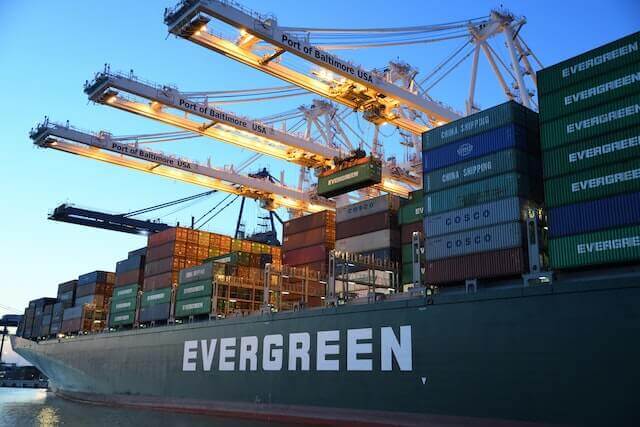
Sea freight from China to most global destinations takes about 30 to 40 days. This method is often considered one of the cheapest ways to ship to Amazon FBA, especially for bulk orders. It works as follows:
- The supplier prepares your order.
- The supplier or a freight forwarder delivers the goods to the port.
- They clear them for export and oversee loading procedures.
- The goods are shipped to you.
- You can either clear the goods yourself or, (depending on your shipping plan) a second freight forwarder will handle import clearances and last-mile delivery to Amazon.
This shipping method is usually ideal for nonurgent bulk consignments (100kgs+).
However, if you only have a short shipping window and would still like to ship by sea, you could consider expedited sea freight options like Matson’s CLX or CLX+. They offer unique advantages like:
- Fixed arrival dates instead of estimates.
- The option to have access to your goods a day after arrival.
- Access to your goods at off-dock facilities without making any appointments.
- Reliable online cargo tracking.
- Expedited last-mile delivery options to various inland US destinations.
On expenses, the cost of sea shipping is calculated mainly based on:
- Distance
- The volumetric weight of your shipment
Naturally, the rates may vary from one shipping company to the next. Other factors such as shipping your goods in an exclusive or shared shipping container (FCL vs LCL) may equally influence your final shipping cost.
Air Freight

Air freight is similar to express shipping because they both rely on airplanes. Nevertheless, it is important to note that:
- Air freight is not expedited and can take up to 10 days compared to the 2 to 4 days of express shipping.
- It has a minimum weight limit of 21kgs.
- It is cheaper than express shipping.
- It is offered by a wider selection of carriers, not just international couriers.
Air freight does not cover door-to-door transport. Therefore, when the goods arrive from China, you may need to either clear the goods through customs or hire a local freight forwarder to do it for you.
This shipping mode can be a good compromise between express and sea shipping. More so for consignments of 100kgs and below. It is cheaper than express shipping yet much faster than sea freight.
Sea Freight UPS Combined or Air Freight UPS Combined

Our above analysis of sea and air freight reveals one common problem: both modes of transport do not cover door-to-door delivery.
Subsequently, if you would like to ship directly to Amazon or yourself, you would need a local freight forwarder to handle customs clearances and last-mile delivery.
Sea or air freight UPS combined aptly resolved this dilemma. It is a shipping service where shipping carriers collaborate with courier services like UPS. It works as follows:
- The shipping carrier transports the goods from China to the port of destination.
- The carrier hands the shipment off to UPS at the port of destination.
- UPS handles all local clearances and delivers your goods to Amazon FBA or your preferred location.
The prime advantages of this approach are that:
- You never have to worry about port clearances or last-mile delivery.
- UPS provides expedited services, unlike ordinary freight forwarders. Your goods will thus be processed and dispatched much faster.
On the flip side, this combined method comes at a higher cost because UPS calculates last-mile shipping costs by weight (kilograms) instead of volumetric weight. The rates are also generally higher due to the expedited services.
All in all, if you can find a way to bear the costs, this may be the next most convenient option to express shipping.
Steps to Ship from China to Amazon FBA
We have delved into all the essential aspects of shipping goods from China to Amazon. So, let’s sum up how it all works in a brief step-to-step guide, shall we?
Step 1: Initiate Sending Inventory on Amazon

Amazon requires sellers to provide details about the inventory they would like to submit beforehand. This enables the FBA program to:
- Know when to expect and prepare to receive your inventory.
- Help you start to onboard your inventory through steps like generating ASINs and FNSKUs.
- Scan its warehouses and let you know where to deliver your inventory.
So, when your supplier in China informs you that your goods are ready:
- Log into your Amazon seller dashboard
- Click on the ‘Inventory’ tab
- Select ‘Manage Inventory/FBA Shipments’
- Select ‘Send/Replenish Inventory’ or ‘Send to Amazon’

These steps will lead you to forms where you can provide details about the inventory you plan to ship to Amazon. You will also get a chance to know how to prepare your goods and generate the right labels.
Step 2: Choose How to Ship
At this point, you will need to decide whether you, your supplier, or a 3PL will handle the prepping of your goods.
This will, in turn, determine whether you will ship the goods directly from China to Amazon FBA or you will need to redirect the goods for prepping.
Let your supplier know your preference once you identify a suitable solution so that they can start shipping or prepping the goods.
Step 3: Choose a Mode of Transport
Compare express, air freight, sea freight, and sea/air freight UPS combined shipping options. Aim for whichever one of them suits:
- Your budget
- The type of goods you are transporting
- The size of your order
- Your timelines i.e. how fast you want the goods delivered
- Your destination
Shipping methods include:
- Express Shipping (ideal for small, urgent shipments).
- Air Freight (faster but costlier than sea freight).
- Sea Freight (affordable for large orders but slower).
- Sea/Air Freight Combined (a balance of speed and cost).
You can negotiate with carriers directly. However, in some cases, your supplier or your 3PL partner may be better placed to negotiate on your behalf. If so, inform them of your budget and request them to handle the negotiations.
Step 4: Tracking
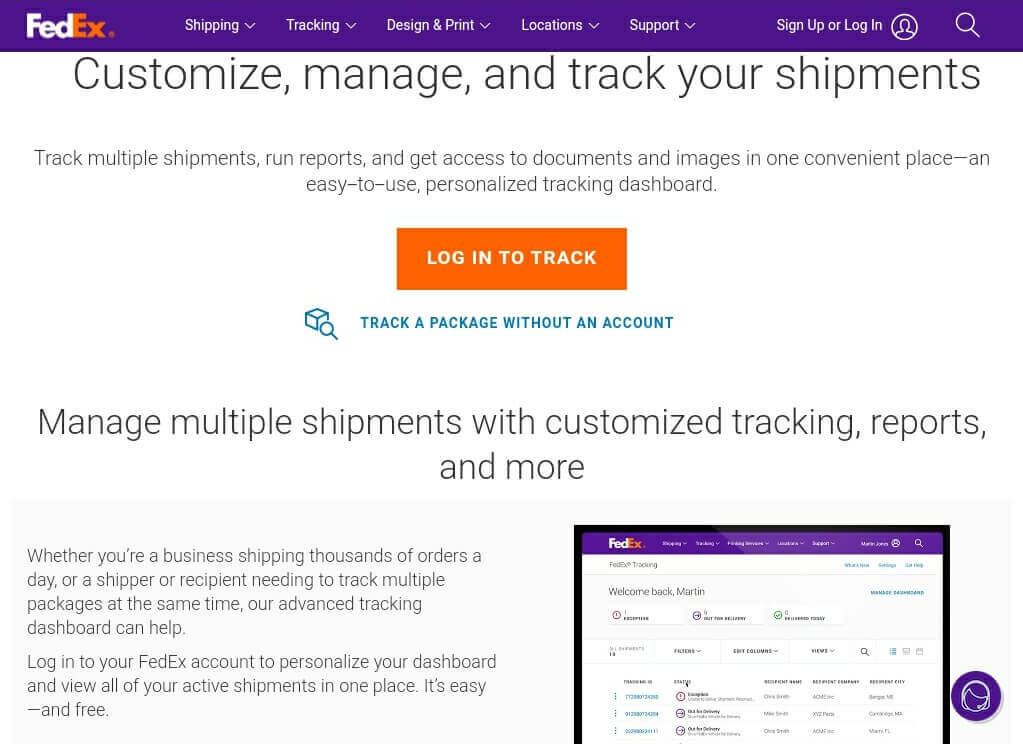
Request tracking details from the moment your goods leave the supplier’s premises. Do not hesitate to contact a carrier if you notice any unusual delays or occurrences while monitoring your shipment.
It is equally wise to keep tracking until you receive an acknowledgment from Amazon FBA that your goods arrived at the right warehouse.
Shipping Issues from China to Amazon FBA: Common Problems and Solutions
Shipping goods from China to Amazon FBA can be a profitable venture, but it’s not without challenges. Understanding common shipping issues and how to tackle them can save you time, money, and frustration.
Here’s a breakdown of potential problems and their solutions.
1. Non-Compliance with Amazon FBA Guidelines
Problem: Amazon FBA has strict rules about labeling, packaging, and inventory preparation. If these rules are not followed, Amazon may reject your shipment or impose additional fees for rework.
Solution:
- Understand the Guidelines: Familiarize yourself with Amazon’s FBA requirements for packaging, labeling, and shipping.
- Provide Clear Instructions: If your supplier or 3PL is handling preparation, ensure they understand and comply with these guidelines. Share resources or templates if necessary.
- Perform Pre-shipment Checks: Request photos, videos, or reports from your supplier or inspector to confirm compliance before shipping.
2. Delays in Transit
Problem: Delays in shipping can disrupt your inventory flow, lead to stockouts, and negatively affect your Amazon seller metrics.
Solution:
- Plan Ahead: Choose shipping methods that align with your timeline. Sea freight is cost-effective but slow; opt for air freight or express shipping for urgent needs.
- Track Shipments: Use reliable carriers that offer real-time tracking. Stay proactive by monitoring progress and addressing delays promptly.
- Work with Reliable Partners: Partner with suppliers, carriers, or 3PLs that have a track record of timely deliveries.
3. Customs Clearance Issues
Problem: Goods can get stuck at customs due to improper documentation or unpaid duties and taxes.
Solution:
- Use DDP Shipping Terms: Delivered Duty Paid (DDP) terms ensure that all taxes and duties are handled upfront, reducing the risk of customs delays.
- Prepare Accurate Documentation: Double-check export invoices, packing lists, and certificates to ensure they are complete and accurate.
- Hire Experts: Work with experienced freight forwarders or 3PLs familiar with customs procedures in both China and the destination country.
4. Product Damage During Shipping
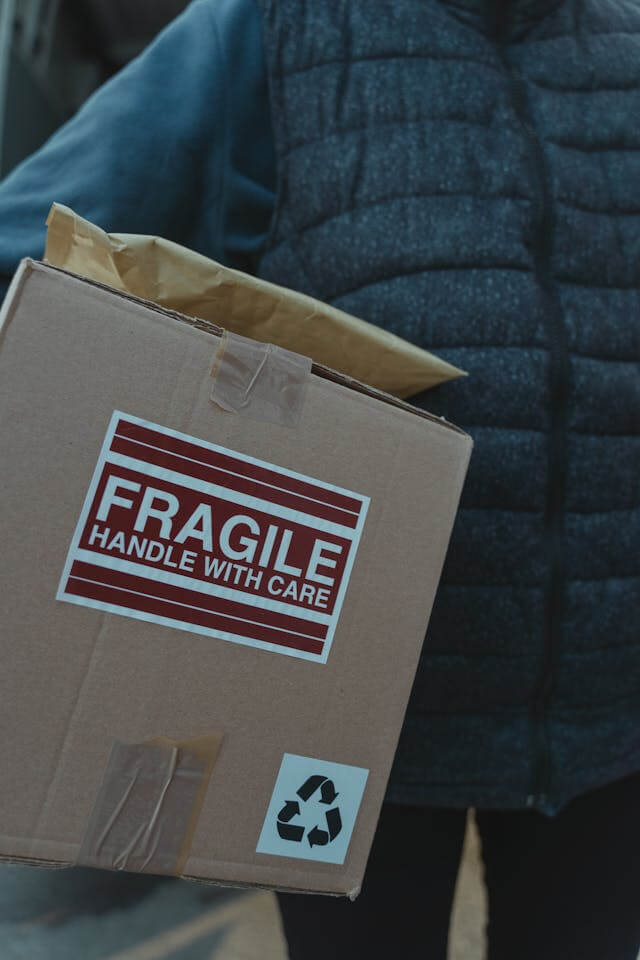
Problem: Fragile or improperly packed goods may arrive damaged, resulting in losses and a tarnished reputation with customers.
Solution:
- Invest in Proper Packaging: Use durable materials and secure fragile items with bubble wrap, foam, or other protective layers.
- Choose Reliable Carriers: Reputable shipping carriers are more likely to handle your goods with care.
- Purchase Insurance: Shipping insurance protects you against losses due to damage or mishandling during transit.
5. Miscommunication with Suppliers or 3PLs
Problem: Misunderstandings about shipment schedules, FBA prep requirements, or shipping terms can cause significant delays and errors.
Solution:
- Establish Clear Communication: Use written contracts and confirm every detail, from shipping timelines to prep specifications.
- Work with Professionals: Choose suppliers and 3PLs with experience in handling Amazon FBA shipments.
- Request Regular Updates: Maintain communication and request updates at every stage of the process.
6. Inaccurate Inventory or Overloading FBA Warehouses
Problem: Shipping more inventory than your assigned FBA warehouse can handle could lead to rejection or additional fees.
Solution:
- Monitor Inventory Limits: Use your Amazon seller dashboard to track inventory levels and ensure you do not exceed your limits.
- Split Shipments: If you have excess inventory, ship it in batches or use a 3PL for overflow storage.
- Coordinate with Amazon: Confirm that your assigned warehouse can receive your shipment on schedule.
FAQs about Shipping from China to Amazon FBA
How Do I Track My Shipment from China to Amazon?
The shipping carrier should provide you with tracking details.
Couriers like UPS, FedEx, and DHL, have tracking provisions on their websites where you can enter details and monitor your consignment.
If your shipping carrier does not have this provision, they will likely recommend a third-party platform that you can use to monitor your shipment.
Which Is the Best Way to Ship from China to FBA?
This may vary based on your budget and other details such as whether your supplier can follow FBA rules.
Evaluate every situation independently and use the tips we have shared to make well-informed choices.
What Happens If My Goods Do Not Arrive at Amazon FBA?
Contact the last carrier that handled your goods as per the tracking information. They may be best placed to help you find your goods.
It may also be prudent to inform Amazon FBA that there may be an unforeseen delay in the delivery of your inventory.
What Do I Do if My Shipment Is Delayed at Customs?
If your shipment is delayed at customs, contact your shipping carrier or freight forwarder to identify the cause. Ensure all required documents are accurate and complete, and promptly pay any outstanding duties or taxes.
If needed, work with a customs broker to expedite clearance. Stay proactive and communicate with all relevant parties to resolve the issue quickly.
In Conclusion
Shipping products from China to Amazon FBA is no longer a preserve of a few experts. As long as you understand the process, you can decide whether to navigate it on your own or delegate it to a professional service provider.
At NicheSources, we understand how tasking it can be to run a business and handle backend tasks like inventory prep. We provide seamless quality inspection, Amazon inventory prep, and shipping support services.
Ready to start shipping or need guidance on your first steps? Contact us with your requirements, request a free quote, and let us take care of the details for you.
